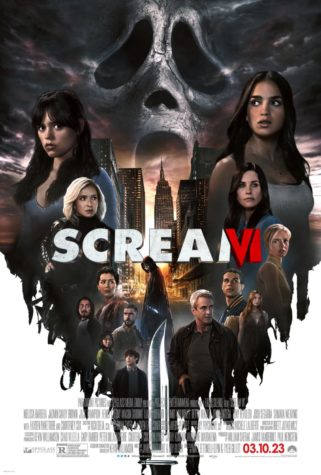A not-so-colorful “Kaleidoscope”
photo by Netflix
Released on Jan. 1, Netflix’s new show “Kaleidoscope” has an innovative structure, but lacks in plot development and characters. However, there were some notable performances.
Everyone longs for a show that is immune to being spoiled, out of reach from the hands of social media. Netflix’s new series “Kaleidoscope,” released Jan. 1, aims to provide a unique viewing experience, where the story changes based on the order you watch it. Not only can it be watched backwards, but viewers can create their own combinations of episodes to alter the plot into a new show. This ‘uniqueness’ serves as a distraction, hiding the flaws in the show’s writing.
The name is quite literal in reference to the layout of the series. Each of the eight episodes is titled after a color to be rearranged, much like a kaleidoscope. It also makes the episodes easier to follow when you choose your own order of episodes. The Guardian claims there are more than 40,000 ways to watch the story unfold, which seems unlikely in terms of creating a unique story. In a second watch of the series, there are alterations to the story, but not in any extreme way, making the different combinations seem to blend together.
The characters come off different depending on what order you watch and can cause you to view them in a different light. While one order may make a character look sinister, another may make them look heroic. This does end up changing my experience as a viewer yet it didn’t seem significant enough to change how the show plays out. It is nice to be able to watch it a second time, but it leaves emptiness, just waiting for a big plot twist that never comes.
The most notable among the cast members is Giancarlo Esposito, master criminal Leo Pap who plans a major heist against his former partner, Roger Salas (played by Rufus Sewell). Giancarlo makes the heist realistic with his diagnosis of Parkinson’s, and Sewell’s performance is satisfactory, as he brings the character to life and displays his character’s personality well.
If watched in the order Netflix provides, Pap is joined by a group of former criminals that have different specialties, such as locksmithing or hacking. The heist is for $7 million, which is secured by the strongest, safest vault in the world.
The acting collectively was humorous and simple. While Esposito and Sewells’ tone was harsh, the other heist members brought a lighter tone. Bob Goodwin (played by Jai Courtney) is a rude, violent character with unrealistic dialogue. He has a thick Australian accent and sometimes refers to himself in third person; he’s just an odd character created to add substance to the plot, but it just comes off weird. The show’s other characters also break this facade of ‘real life,’ which damages the show as a whole.
If you are looking for something new in terms of the viewing experience, you will enjoy this. However, no matter the order, the plot is not revolutionary. Its only real uniqueness is the time jump between episodes, which don’t provide much either. Each episode begins with a recap which ruins the immersion of a fluid, real-life story. Regardless, the show’s plot is successfully conveyed and achieves the ability to be rewatched in a new order.
The idea of the show is refreshing, a story that is meant to be watched not once, but many times to gain a new perspective. However, the show seems to focus too hard on being rewatchable that it loses the plot. What the show needed to stand out was a more advanced story with deeper connections and different points of view, but the series is still interesting. If you are looking for something new, try looking through the kaleidoscope.
Your donation will support the student journalists of Hagerty High School. We are an ad-free publication, and your contribution helps us publish six issues of the BluePrint and cover our annual website hosting costs. Thank you so much!












